Some identification help and advice about the beasties we may come across around our little area of heaven on earth…
Snakes:
Snakes are quite widespread in Spain, but you are probably unlikely to see one as they stay well away from humans. All snakes are legally protected and beneficial to man (they consume large quantities of rodents and other agricultural pests). There are over 65 types of snake and reptile in Spain, most CAN give you a bite if you pick them up wrong or annoy them, all of them though just want to get as far away from you as fast as possible, so allowing them to do so without trying to beat them to death or stamp on them is a good idea!
The only snakes of any danger to humans or pets are Vipers which have a painful venom, although hardly ever fatal to humans. Vipers are smallish snakes with an uneven distribution in Spain. Even where common they are difficult to come across as they are shy and retiring. Of the estimated 50 snakebite deaths a year in Europe, only 3-6 occur in Spain, (around 2 of them in Catalonia). This isn’t therefore a huge danger to us humans.
The three local snakes to watch out for are:
Montpellier snake (can get quite large up to 2-metre long). It is blue with prominent ridges over the eyes with a white underbelly -don’t go picking one up to check. The position of its venom fangs means that you would be unlucky to have poison injected into you, and if you are, its venom is much weaker than the vipers.
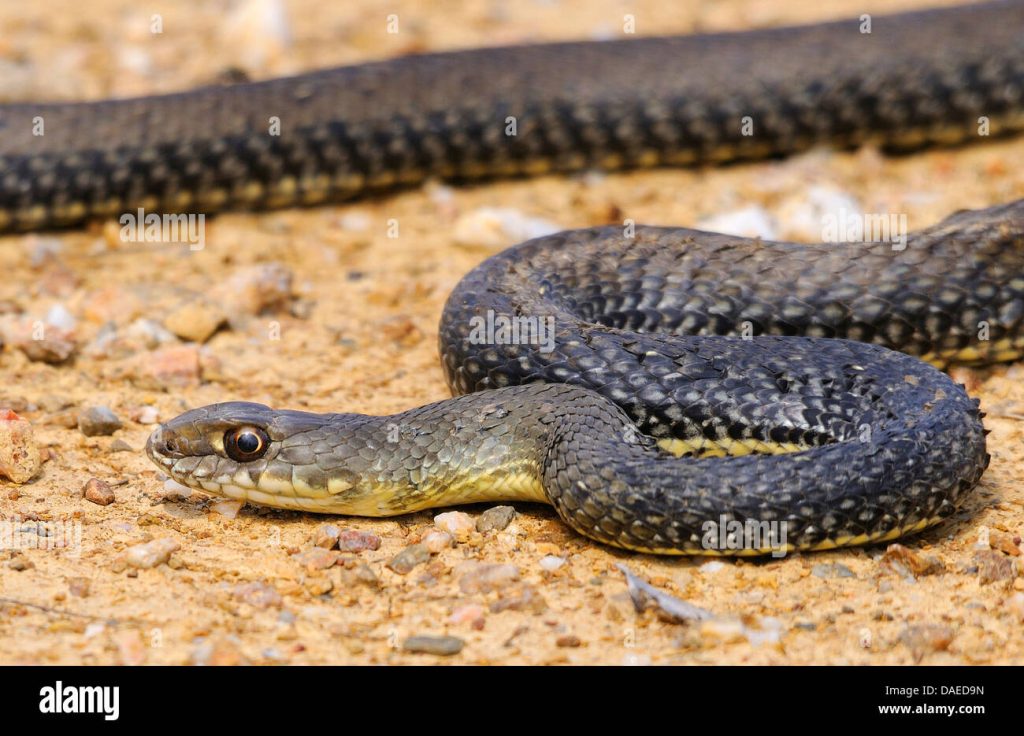
Ladder snake – a species of Rat Snake found in Spain. The young have a bold ladder pattern, which is reduced to two simple stripes in adults. Timid, but will rear and strike if approached of threatened. Venom is mild to strong, (enough to kill a rat!).
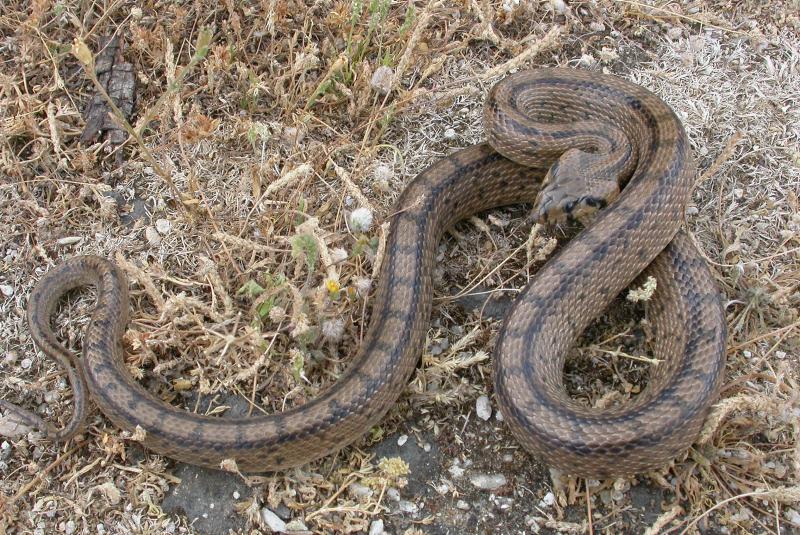
Lataste’s viper, is NOT common. It is grey, short (around 50cm) and is distinguished by its triangular head and the zigzag pattern on its back. It lives in dry, rocky areas, holes and crevices and old firewood piles away from humans and is timid. It’s bite has been registered as fatal, but usually only to those with underlying health issues.
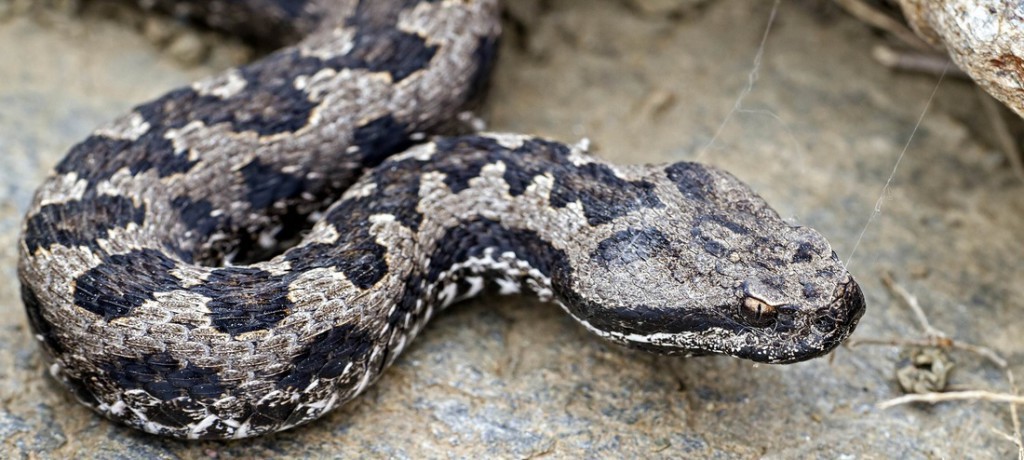
The other two poisonous ones are Seoane’s viper which only really lives in Galicia, León, the Cantabrian coastal strip and the Basque Country and the Asp Viper which is restricted to the Pyrenees region.
If you are bitten, remain calm and seek medical attention immediately. Try to take photographs of the snake with you to aid in their identification to ensure correct anti-venom or anti-allergy treatment is given. Bites only occur in the spring and summer usually (snakes hibernate).
Spiders:
There are more than 1,700 species of spider in Spain but only four are in way harmful to us. By far, the most dangerous is the black widow which gives a medically-complex and painful bite though it is not fatal. They are commonest in Valencia and Andalucía. Recently there have been two imported spider types reported but these are not widespread and not in our region being in Saville and Mallorca.
The fearsome-looking true tarantula or wolf spider (Lycosa tarantula) is also known here on the Costa Blanca for appearing in our pools and “magically” coming back to life when taken out of the pool.
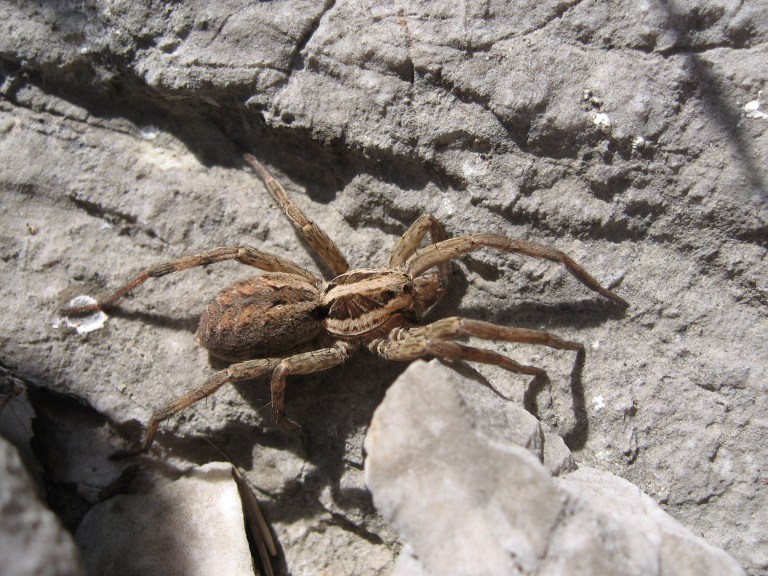
Or if fully black; – Be aware that these can be almost identical to Funnel Web Spiders in appearance.
They can survive exceptionally long periods of time, even on the bottom of pools, by using air trapped in the hair of their bodies to breathe. Spanish Tarantulas are no relation to the much larger bird spiders of South America which have inherited the name, and their sting is weak, often no stronger than a wasp or bee sting. Spanish tarantulas (wolf spiders) are found in arid zones all over Spain. Their bite can be painful but not dangerous UNLESS A PERSON IS ALLERGIC TO THEIR BITE/STING.
WARNING: The hairs on the bodies of these spiders CAN cause severe allergic reactions, although they are not poisonous, the hairs are akin to fibreglass particles.
The Black widow is Spain’s most venous spider and considered to be one of most dangerous in Europe. The black widow is found commonly throughout Andalusia and less commonly all along the coastal regions. Blue or Purple Widows sporting these colours on their backs also exist but are in reality almost the same spider as the black widow.
With its black body and distinctive red (or other colour) spots, the spider is generally nocturnal, the spider’s prey tends to be other insects, but it has been known to occasionally eat small rodents. The black widow spider has a particularly toxic venom, which can prove fatal to humans though rarely.
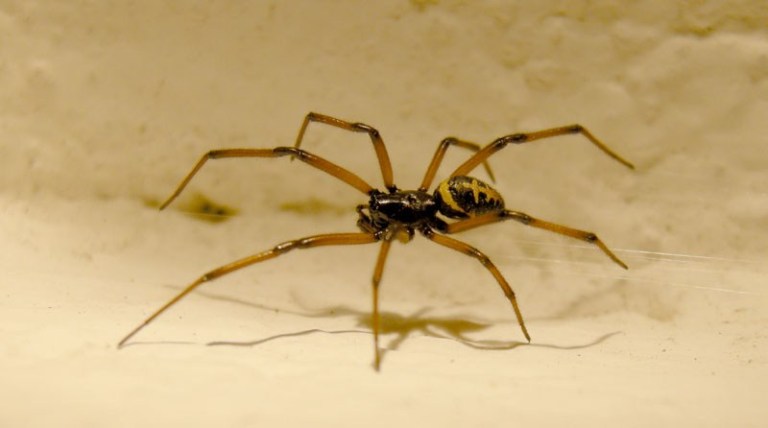
The Recluse Spiders found in Spain are generally less virulent than those in other parts of the world and is not lethal. Bites from this spider cause a tender blister to develop, characteristically with a “bull’s eye” appearance (a red centre). At the time a person is bitten, it is often unnoticed, and it can be several hours before the venom starts to take effect. Then, it is very painful.
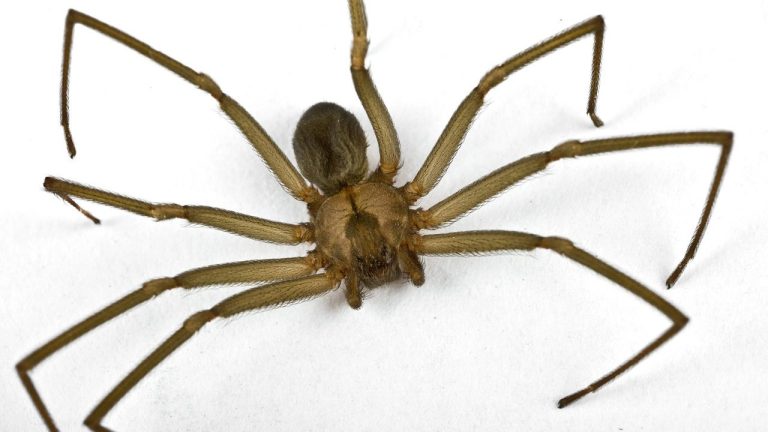
Mediterranean funnel web spiders look impressive and live in typical funnel-shaped net.
The bite is more a sting and is not considered to be serious unless allergies in the victim are present. Typically, they live in thickets and woods or a shady spot behind sheds, garages or in hedges. Active all year during the day and night and is one of the most common spiders along the Mediterranean Sea and the coastal areas.
If bitten/stung in ALL CASES seek medical attention as soon as possible, remain calm, if possible trap the spider or photograph it so medical staff can identify which type of spider it is, and give the (commonly available) anti-venom/anti-allergy injection or tablets correctly. Be aware that allergic shock reactions can happen hours after a spider bite, so seeing a pharmacy or doctor or going to Centro Salut/Hospital is NOT a waste of time or effort, even if the bite itself is minor.
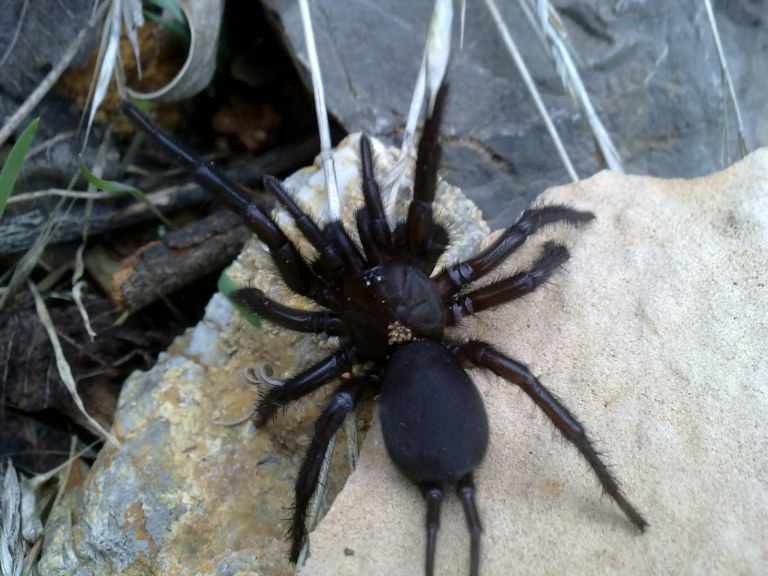
Scorpions:
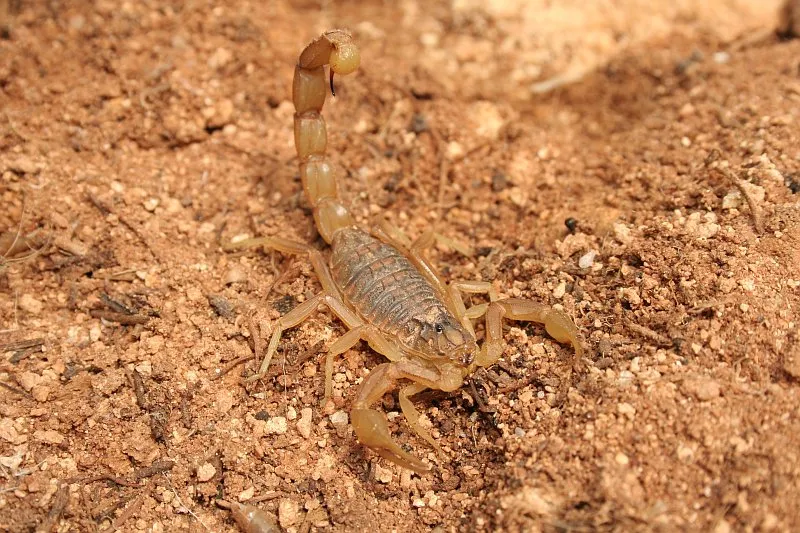
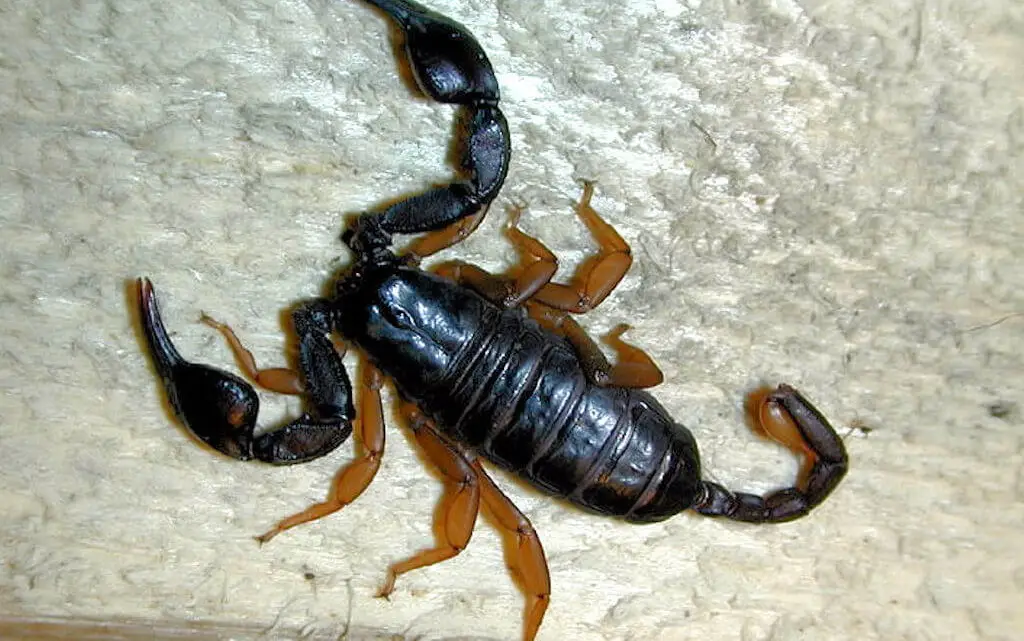
Mediterranean Scorpion :
The most common scorpion in Spain is the Mediterranean scorpion is very similar to its African cousin (which can be deadly), – it will still give you an extremely nasty sting. They are common in dry rocky areas (most of wild Spain). They give painful but not deadly stings UNLESS ALLERGIES EXIST.
The European Black Scorpion:
Mainly in the northern part of Spain. The sting is very painful but not deadly to humans UNLESS ALLERGIES EXIST.
If stung by a scorpion, seek medical help immediately, but remain calm. Even in the case of allergies, a simple anti venom or anti-allergy injection administered within a couple of hours will solve any problems rapidly.
Centipedes:
Mediterranean Tiger Centipede:
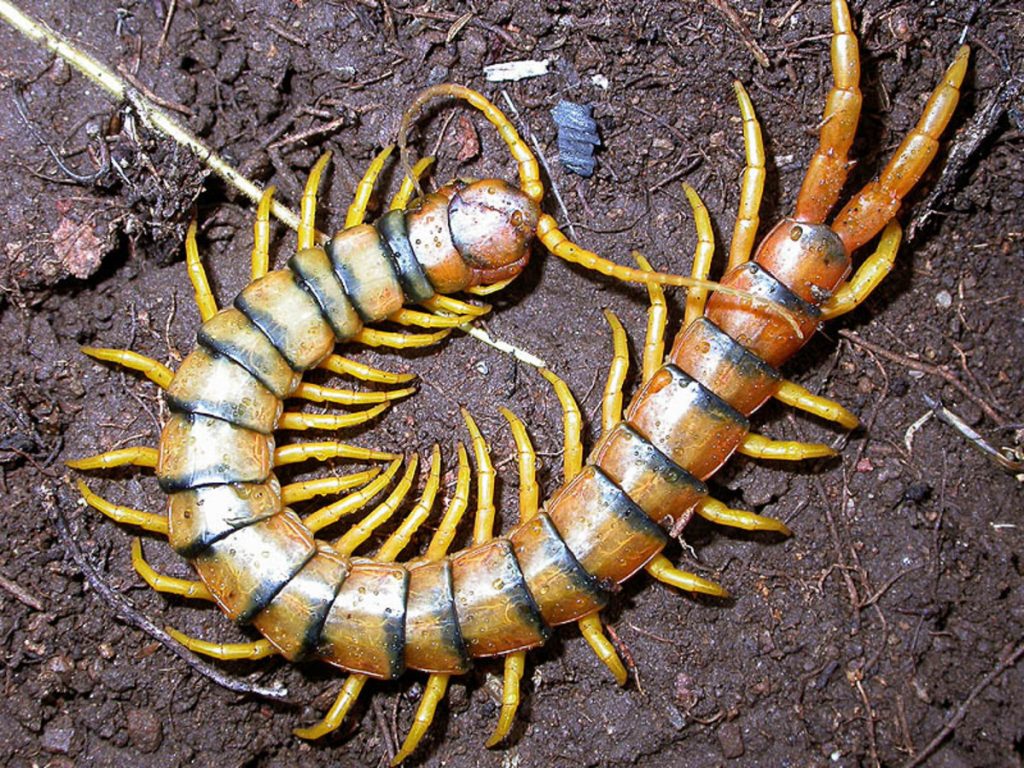
Found throughout Southern Spain, although not often seen. The Mediterranean Tiger centipede is the largest in Europe and can grow up to 15cm in length. The centipede’s markings and colours change, depending on location. Generally, they are yellow with black stripes, hence the name tiger. Nocturnal and venomous; they can give a nasty bite. Rarely lethal, (unless allergic to the venom), their stings are extremely painful and require medical assistance.
Pine or Processionary Caterpillars are found throughout Spain. As well as causing much damage to pine forests, they are a major danger to animals and, to a lesser degree, human beings.
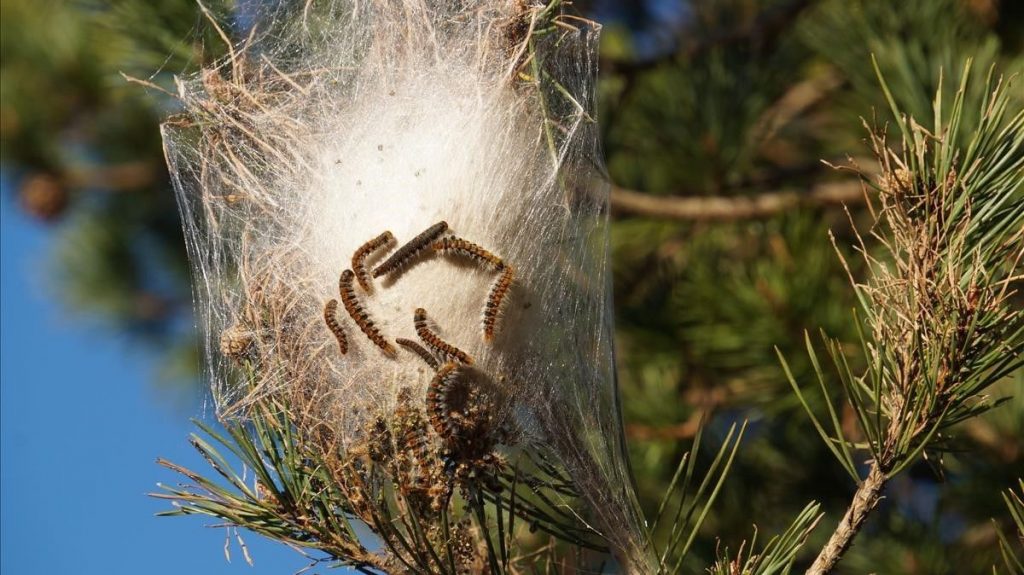
Do not touch them. The exceptionally fine hairs on these creatures are poisonous and dangerous. They can be seen living in silk cocoon style nests hanging in pine trees to which they are harmful, stripping them of their pine needles. When hungry, they leave their cocoon to seek another uninfected tree on which to feed. They travel nose to tail in a line, hence the name Processional. They are most noticeable from January to mid-April and are at their most dangerous in mid/late February. The caterpillars are often seen in the evenings, walking in procession from tree to tree.
If touched with naked skin the effect causes great irritation, rash, and pain. Dogs, cats, and people can suffer from allergic shock to this poisoning. The hairs of the caterpillars are still virulent even when the creatures are dead.
If you live near pine trees, it is recommended that you keep Anti Histamine tablets handy as an early treatment. Avoid ingesting the hairs or having them touch your eyes, which can be particularly irritating and cause swelling and pain. Dogs are most at risk by sniffing the ground where the caterpillars have marched. If you (or pet) have encountered these caterpillars and are now showing signs of shock or rash/irritation, stay calm, but seek medical assistance who will be able to rapidly treat the effects.
Seek expert advice preferably from licensed and experienced garden centres before attempting to eradicate any infestations you may have in your garden or immediate area, it is very easy to make a bad situation worse by employing the wrong techniques in dealing with them.
So, a summary, this is NOT an exhaustive list of “nasties”, (fire salamanders, toads, jelly fish, etc, etc). Hopefully, it will serve as a quick reference though for people who need it.


